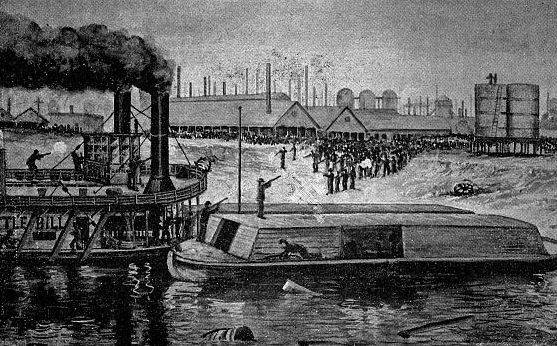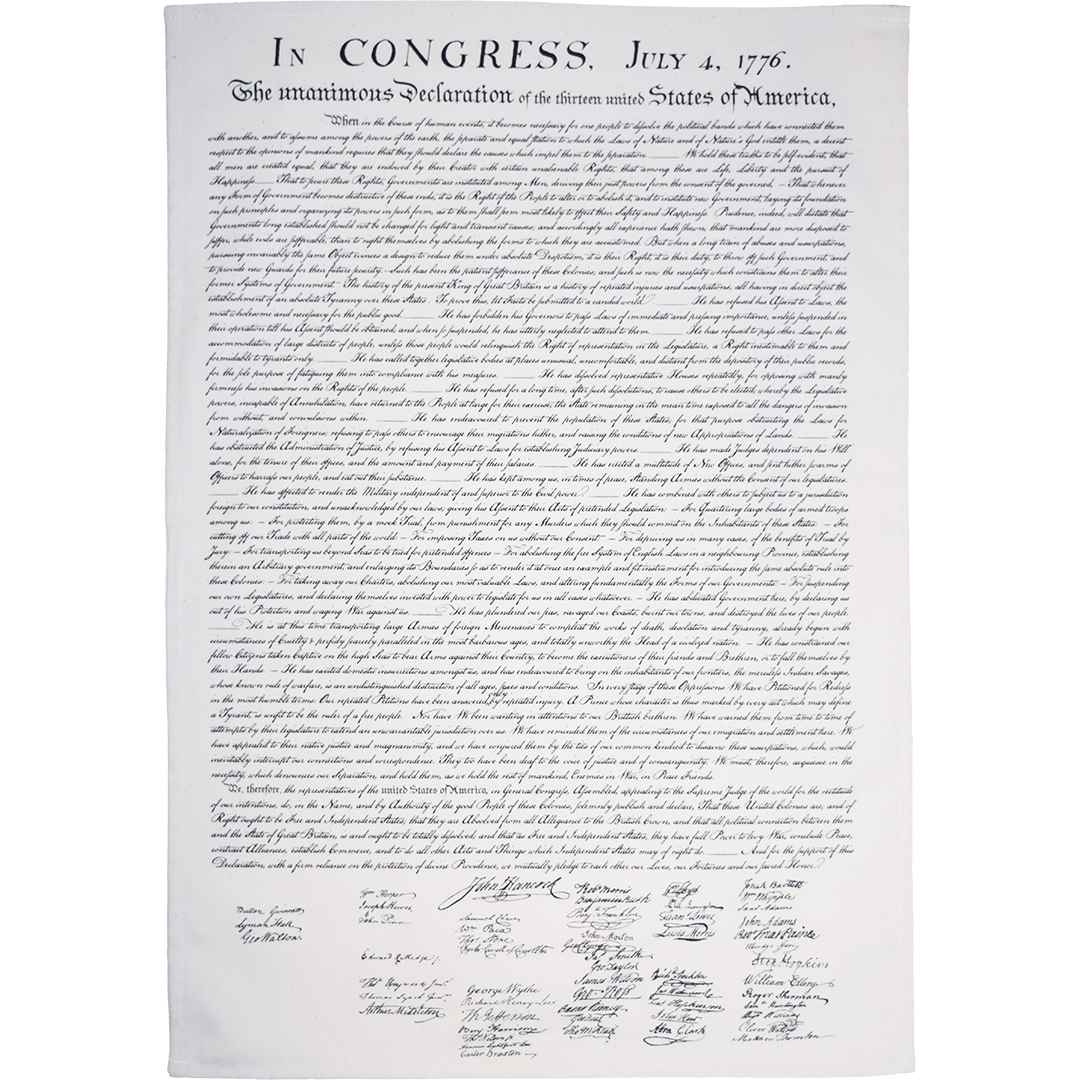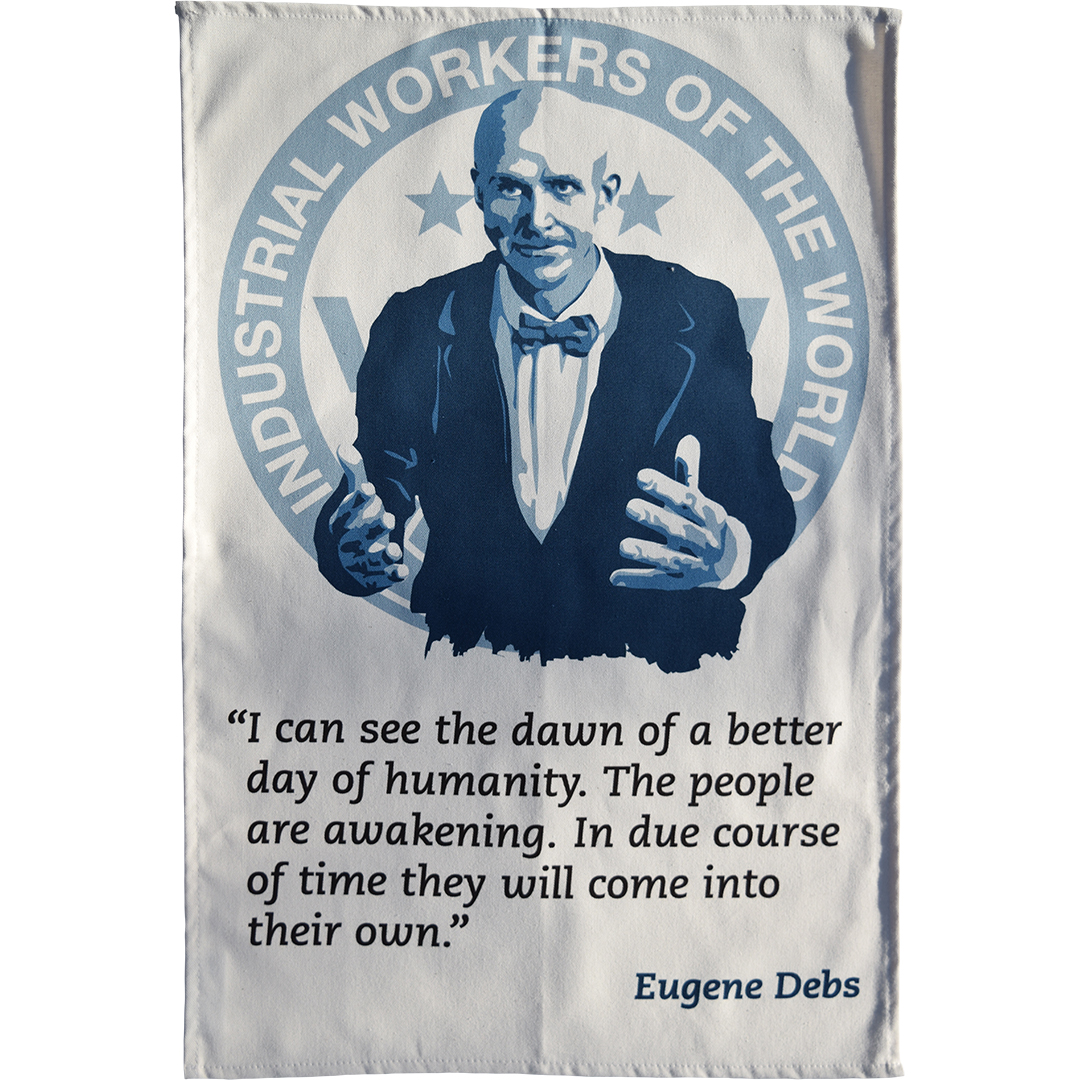Steelworkers at War: The Battle of Homestead
Posted by Pete on Jul 2nd 2023

When a greedy steel magnate tried to tear up workers' rights, Pennsylvania steelworkers fought back
“We are asking one another
as we pass the time of day
Why working men resort to arms
to get their proper pay…”
In early July in 1892, Pennsylvania steelworkers went to war.
And it wasn’t a war of their own making.
In the steel town of Homestead, near Pittsburgh, the Carnegie Steel Company had decided to destroy the local union.
The steel magnate, Andrew Carnegie, took pride in his public image as a philanthropist. His concern for the poor and downtrodden knew no bounds – that is, until they began to organize collectively and fight for a better life.
Pennsylvania plays a key role in US radical history - it was here that the Declaration of Independence was signed on July 4, 1776
Click to view our US Declaration of Independence tea towel
When it came to his corporate profit margins, Carnegie was as brutal as all the other ‘captains of industry’ in America.
But in Homestead, he wasn’t going to get his way without a fight.
The Amalgamated Association of Iron and Steel Workers – the AA – was a mighty labor union.
In 1889, it had carried out a wave of strikes for union recognition, better pay, and better conditions. And it had won.
For three years, labor seemed to have the upper hand in Homestead. Defending themselves through the AA, workers at the steel plant made sure their terms were upheld, and that the bosses respected the dignity of the working class.
But in 1892, the collective bargaining agreement won three years earlier was set to expire. And Carnegie had no intention to renew.
Despite the fact that the U.S. steel sector was booming, with record profits, Carnegie’s local henchman, Henry Clay Frick, offered the AA a huge pay cut – 22% for many of its members.
The Union, of course, refused, and launched a strike on 1 July. Just as Frick and Carnegie had expected…
Two years after the Battle of Homestead, the great American socialist Eugene Debs would lead the nationwide Pullman Strike
Click to view our Eugene Debs tea towel
They had been preparing for a fight – a big fight – with the Union for months.
Steel had been stockpiled to weather a strike. A barbed wire fence was built around the Homestead plant.
And a deal had been struck with the infamous Pinkerton Detective Agency – thugs for hire – to provide armed security for strikebreakers.
But the Homestead steelworkers were prepared too. When it came to strikes, this wasn’t their first rodeo.
The AA immediately secured sympathy strikes from the Knights of Labor, and other Carnegie steel mills in Pennsylvania.
In Homestead, the pickets were divided into units and posted around the town, 24/7.
With the full support of the local working class, it was the Union who controlled the streets.
The Lawrence Textile Strike - when this poem was used as a union slogan - was one of many radical struggles in the decades after the Homestead Strike
Click to view our Bread and Roses tea towel
As for the Pinkertons, the steelworkers were ready for them.
Carnegie had spared no expense, planning to ferry 300 armed agents down the Monongahela River under cover of night, to get them inside as a garrison for the Homestead plant before the strikers knew they were coming.
But the AA were tipped off by their allies in the rest of Pennsylvania.
They’d built up their own labor navy, made up of a riverboat and some smaller rowboats. When the Pinkertons came downriver, the steelworkers’ ships came out to hassle them. It was class war on the water.
Early on the morning of 6 July, the Pinkertons tried to land at Homestead. They failed miserably.
Confronted not just by hundreds of armed strikers, but thousands of Homestead citizens, especially women, on the riverbank, the Pinkertons fled back to their boats.
They tried to shoot their way out several times. Every time they were driven back.
At 5pm, after a whole day of fighting, Carnegie’s hired goons surrendered. The strikers had won!
But their victory was short-lived.
On 12 July, the Governor of Pennsylvania – elected with Carnegie money – sent thousands of national guardsmen into Homestead to break the strike.
The ‘free’ market between capital and labor was rigged in nineteenth-century America.
When the bosses had the upper hand, the state was conscientious about not being able to intervene in the economy. But when organized labor was more powerful, the army was sent in.
Cowering behind army bayonets, Carnegie Steel was free to rip up workers’ rights in Homestead.
Strikebreakers flooded into Pennsylvania, the AA was broken, and its members forced to accept massive pay cuts and precarity.
But victory or not, the Battle of Homestead had shown the world that the working class in America was smarter, braver, and more resilient than the rich and powerful.
The legacy of the Battle of Homestead lived on in the strikes of the early twentieth century, including in 1937 when striking steelworkers stood up against their greedy anti-union bosses.
It will forever be a momentous chapter in the radical history of the United States.



